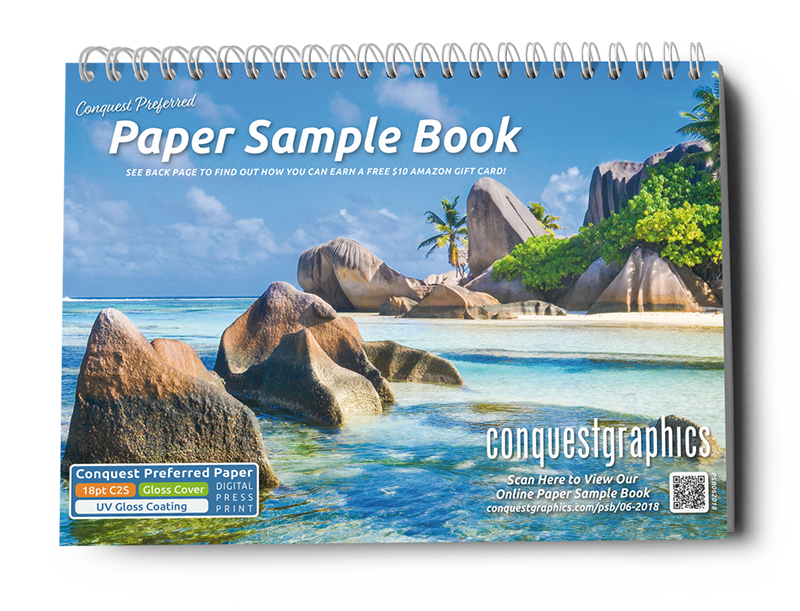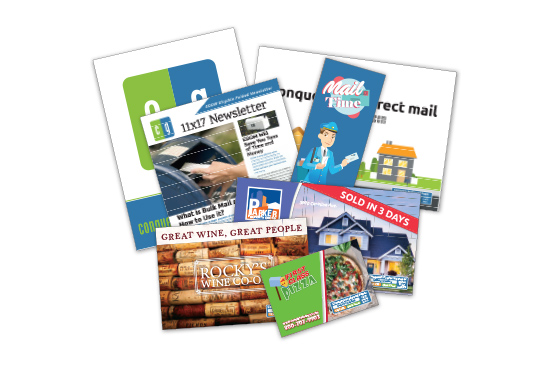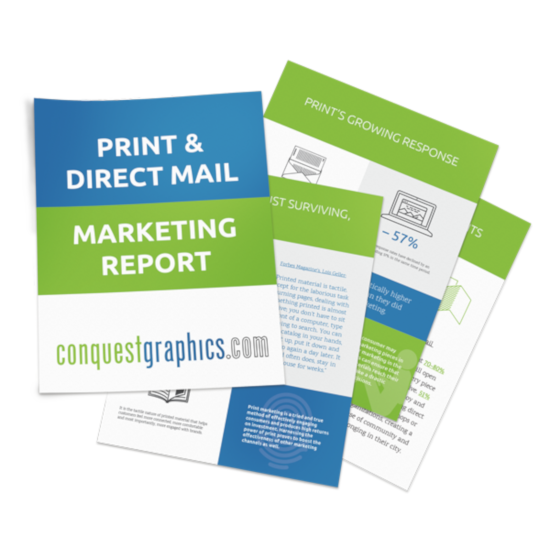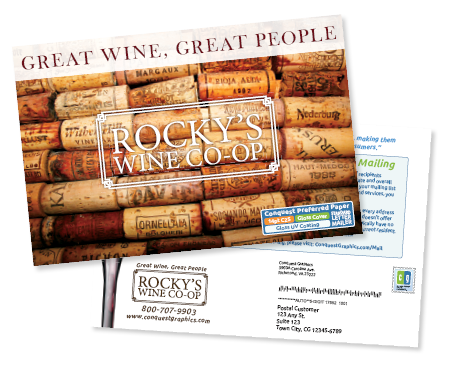Printed newsletters may seem old-fashioned, but the real question is “Do they still work?” The answer varies across industries, but on average, the answer is “Yes–they work!”
There’s a catch though…
You have to put together a great printed newsletter to get great results. Your newsletter should (a) provide truly valuable information and (b) make recipients feel more connected to your business. Many companies slap together last-minute newsletters–throwing in boring product updates, random awards they’ve won and usually a pet picture or two (ok, we’ll let the pet pictures slide). But, that type of newsletter content focuses on the business rather than the recipient - and that’s the big mistake.
Here’s a secret: The majority of customers in the U.S. actually enjoy receiving direct mail, including newsletters, when it’s relevant to them. In fact, over 90% of consumers say they respond more to paper advertising than electronic advertising. Printed newsletters work best when business owners use them to educate and connect with consumers first and advertise second.
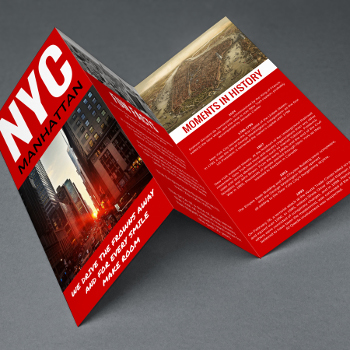
Great Printed Newsletters Educate Consumers
A major benefit of printed newsletters is showing your expertise in the industry. Recipients are comforted by brands that are able to demonstrate their familiarity with industry news and current trends. Newsletters are particularly useful for delivering more detailed content that wouldn’t be possible with a postcard or brochure. By making the most of this space, you can teach consumers new information, which they’ll then associate back to you.
Here are a few of the best ways to provide informative content for your readers.
Case studies: Reading about someone else’s success can send a powerful message. Case studies allow the reader to visualize the product or service in action, and envision what it could do for them. They’re also great for adding validity to your claims. It’s one thing to say your product does something; it’s another thing to prove it.
When possible, use a case study from your own company. Showcasing before and after scenarios, backed by data, are ideal. If your company is still young, and success stories aren’t yet available, look to your distributor. Many distributors and manufacturers will provide these types of resources for you to pass on to your customers. If you can’t do that either, search online for a case study from another professional in your industry. As long as you can demonstrate your type of solution will have a positive impact, you are communicating the right message.
Explain something confusing: There are parts of every business that the customers don’t completely understand. That’s a big reason blogs are so popular. But, you can educate your consumers with newsletters the same way you would with a blog post.
When you’ve been working in your industry for a while, it’s easy to assume people know what you know. But, the truth is they don’t! Take some time to come up with a topic your customers might not be fully educated on. Talk to customer service and sales reps for ideas. They interact regularly with customers and are used to fielding questions. Use your expertise to explain a complex topic in a simple way. Doing this will highlight your knowledge in the industry and help your customers make more informed decisions.
Tip: explain complex topics as though you’re speaking to a twelve year old. Avoid complex words, and keep the message simple.
Share industry news and trends: The information you share with your readers doesn’t just have to focus on your area of business. When you stumble upon something new and exciting in an industry magazine - or even in a generic business book, write a summary of that article, adding in your own perspective. Sharing your personal take on other’s ideas will show off how you think and approach new ideas. It also helps to position you as an authority in the industry.
Printed Newsletters Provide More Promotional Space
Your newsletter should inform & delight your readers, but that doesn’t mean you can’t add some subtle advertising. Promoting new products or services adds value to the reader, when done tastefully. If your new product or service will make your customers’ lives easier, show them how. Keep the message objective, and avoid gaudy advertising. Flashy advertising, in what’s meant to be an informative and educational newsletter, will be a turnoff to readers.
More Ways To Create A Great Printed Newsletter
Choose the best format. Your newsletter formatting can be just as important as what it actually says. Different industries will often favor different layouts and designs. If your product has visual appeal, include ample space for high quality photographs. If your business is service oriented, photographs provide far less value, and should be used more sparingly. Instead, give more visual emphasis to charts and graphs to help tell your story.
Add some personality. The world is flooded with content. If you send a newsletter that’s like everything else, it will blend in with the noise. Adding your own personality does a couple things: For past customers, it reminds them why they bought from you before and for new customers, it shows you’re different and what it’s like to work with you.
It also helps you stand out. To get your newsletter read, you have to get the recipient’s attention. Think of ways you can highlight your company’s unique personality in your newsletter. Here are a few examples!
Use the colors of your logo to identify yourseIf. If your brand has a bright pink logo, add that color to your newsletter–it will attract attention and become recognizable as your brand.
Choose writing and graphics that represents your company. If your company is fun and free-spirited, choose a more playful font. If you want to give the impression of authority, use a more traditional and firm font. Just make sure that your content is easily readable for consumers.
Use a paper stock that reflects your company’s values. If your company prides itself on being eco-friendly, use a recycled paper stock. If your company supplies high quality products, reflect that in your newsletter by using a higher quality paper stock. Your readers will notice the difference!
Get the header right. The first thing people look at on your newsletter is the header. It will appear on every page of your newsletter, so take some time to get the header right. Make sure your header gives a great impression, helps people take action, and effectively conveys your company’s brand. It should tell the consumer that you’re a relevant business and not just another piece of unwanted mail. Here are a few items to include in your header:
- Your company name and logo
- An attractive design that works well with your name and logo
- Your company’s phone number
- Your company’s address (if it’s important for customers to know)
- The newsletter’s title and the date
- A monthly message (optional)
Use effective imagery. The use of images is very underrated when it comes to direct mail and printed newsletters. According to Hubspot, the brain processes visual information 60,000 times faster than it processes text. Your readers will interpret the information in your images instantly, without thinking about it. Great images will evoke an emotional response and they’ll echo what your text says. You can also use images to grab the recipient’s attention, break up large chunks of text and help to explain things your content can’t. When putting together your newsletter, take time to curate the right images or graphs in the most appropriate places.
Be consistent. People are more comfortable with consistency than surprises. The more consistent you are with the timing of your newsletter, the less you will surprise them, and the more receptive (and comfortable) they will be receiving your message. Monthly or quarterly timing is necessary for developing a consistent reputation.
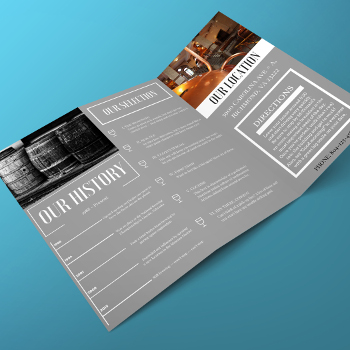
Why Use Printed Newsletters?
Printed newsletters can be sent through direct mail to your mailing list, included with other advertising or placed out on display inside your brick-and-mortar location. Newsletters will attract different customers and clients depending on the type of content you offer. You’ll find some react more to graphs and charts, some are interested in facts and statistics, while others respond to informative articles or compelling images. Your industry and target customer will dictate what’s most appropriate for your marketing. Keep track of what seems to resonate with your target market and continually tweak your content to be valuable for them and rewarding for you.
It’s important to understand the value of printed newsletters even in modern marketing strategies and how they figure into your marketing mix. The ability to combine a variety of informational methods in one compact space is an absolutely invaluable tool, regardless of your industry or field.
Contact Conquest Graphics at 800-707-9903 to get started with your printing today.
Order Newsletters Today
